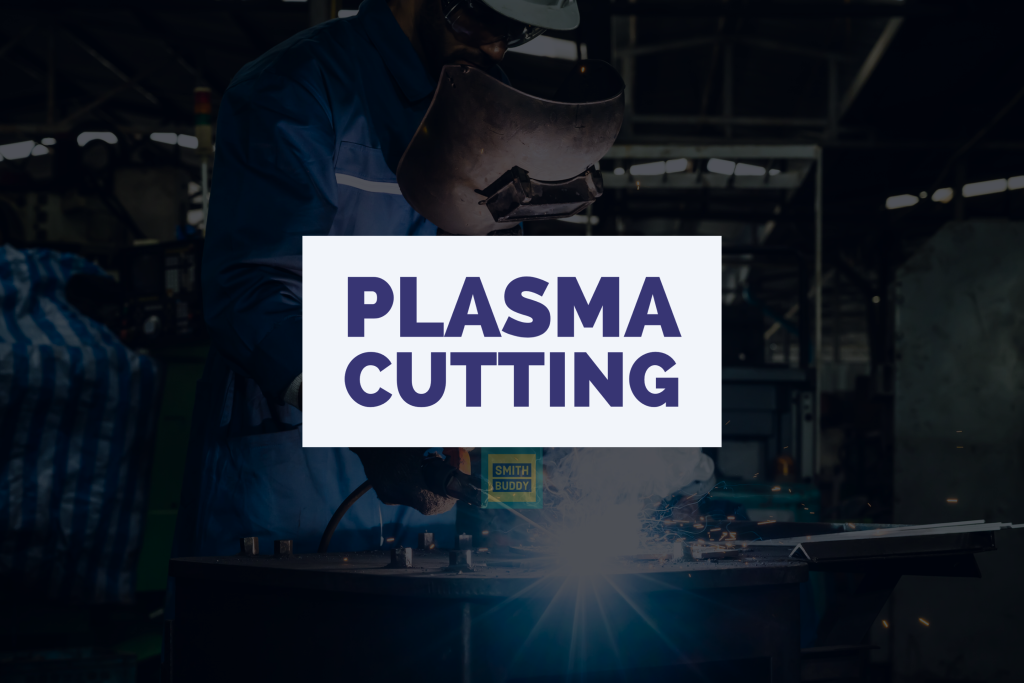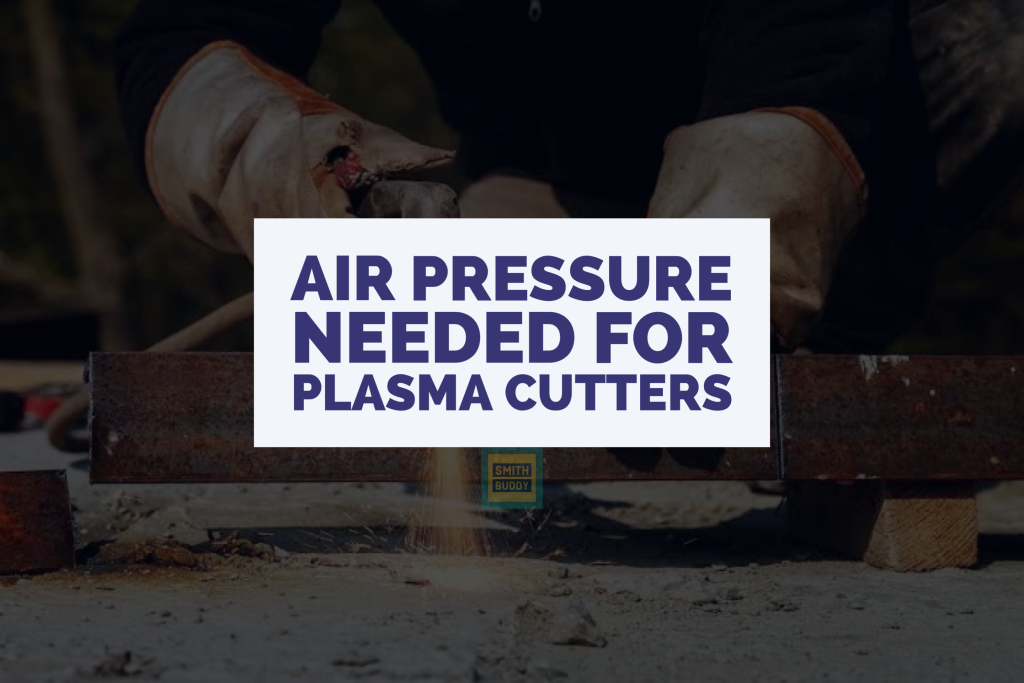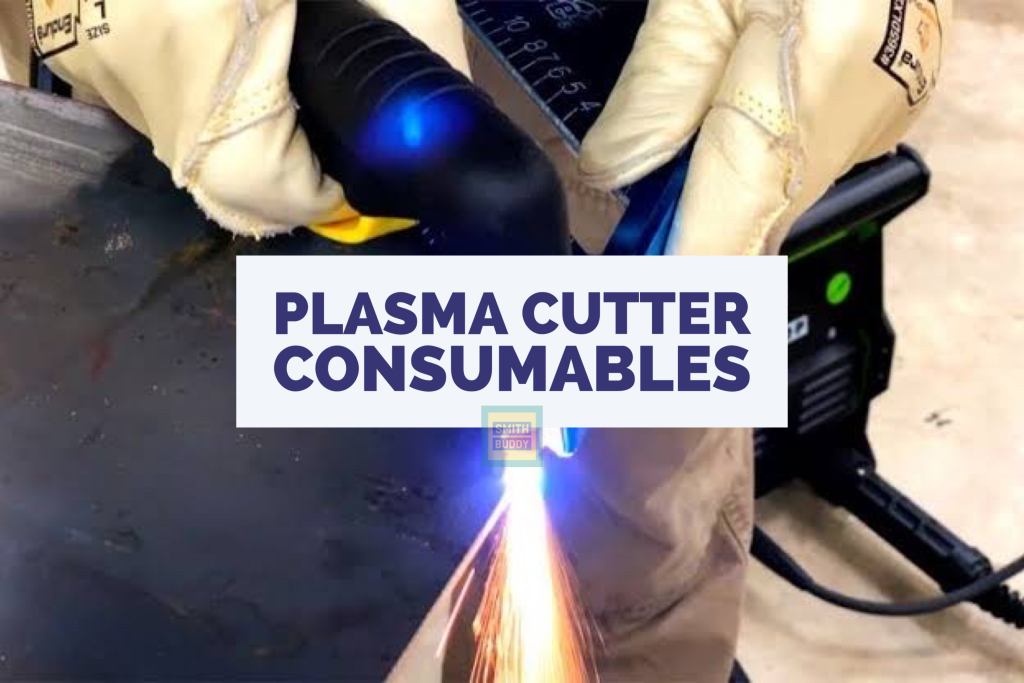When it comes to metal cutting, there is no substitute for the precision and accuracy of a plasma cutter. It is an ideal tool for cutting intricate shapes, making smooth curves, and creating sharp edges. However, in order to get the most out of your plasma cutter and make sure that your metal cutting experience is smooth and successful, there are a few tips and tricks you should keep in mind.
In this article, we will provide you with some helpful tips on how to get the most out of your plasma cutter and make your metal-cutting experience easier and more efficient.
Use the correct cutting speed
Correct cutting speed helps in plasma cutting by ensuring the best results. It helps to achieve a clean cut and minimal cut edge beveling. It also helps to reduce the risk of poor cut quality, dross, and warping. The correct cutting speed will also help to maximize the life of the consumables, such as the plasma torch and cutting tips, and reduce the amount of post–processing required to finish the cut part.
How to choose cutting speed?
When choosing a plasma cutter speed, the most important factor is the thickness of the material you are cutting. The thicker the material, the lower the speed you should use. This is because the plasma arc needs more time to penetrate the material and achieve a clean, accurate cut.
The type of material also plays a role in determining the cutting speed. For example, if you are cutting aluminum, you should use a higher speed than you would if you were cutting steel.

It is also important to pay attention to the manufacturer’s recommendations for the plasma cutter you are using. This information can usually be found in the manual or on the product’s website.
For instance,
- When cutting mild steel with plasma, the ideal cutting speed is between 20–40 inches per minute (IPM).
- When cutting aluminum with plasma, the ideal cutting speed is between 60–80 IPM.
Use a drag shield to prevent slag from splashing
A drag shield is an accessory used with plasma cutting torches to provide extra protection from the heat of the plasma arc. It works by creating a shield between the cutting surface and the torch, which helps to reduce the amount of heat transferred to the cutting surface. This helps to reduce the risk of warping, burning, and other damage to the cutting surface.

In addition, the drag shield helps to increase the life of the torch and the consumables, as well as increase the cut quality. The drag shield is constructed of a non–conductive material, such as Teflon or ceramic, and is designed to provide a smooth, uniform surface for the plasma arc to travel over, which helps to prevent the arc from being disturbed by rough or uneven surfaces.
The drag shield also helps to reduce the risk of arcing and splatter, which can be hazardous to the operator.
Read about the common problems of Plasma Cutters.
How to choose a drag shield for your plasma cutter?
When choosing a drag shield for a plasma cutter, look for a shield that fits the machine and is made of a durable material that is resistant to heat and abrasion.
- Consider the size of the material you will be cutting, as well as any special features the shield may have that will allow you to work more effectively and safely.
- Consider the type of material that the shield is made from and the amount of protection it offers.
- Be sure to check the manufacturer‘s specifications for the shield to make sure it is compatible with your plasma cutter.
Use a pilot arc to start the cut
Pilot arc technology helps to initiate and sustain the plasma arc during the cutting process. This technology uses high frequency to create a spark between the electrode and the nozzle tip.
This spark creates an ionized channel of gas, which is then used to transfer the electrical current to the cutting surface.
The advantages of using the pilot arc technology are that it reduces the amount of time it takes to start the plasma arc and it helps to keep the arc stable while cutting.
The pilot arc also helps to reduce the amount of taper in the cut and can improve the overall cut quality.
How to choose the pilot arc?
This is how you need to get the pilot arc for your plasma cutter:
Consider the thickness of the material you plan to cut. Pilot arc plasma cutters are best for cutting thin materials like aluminum or stainless steel up to 1/4 inch thick. For materials thicker than 1/4 inch, you should choose a high-frequency (HF) plasma cutter.
Determine the type of material you plan to cut. Pilot arc plasma cutters work best with conductive metals like aluminum, brass, and copper. If you plan to cut non–conductive materials like wood or plastic, an HF plasma cutter is a better choice.
Consider the shape of the material you plan to cut. Pilot arc cutters work best with flat materials, while HF cutters can handle curved or irregularly shaped materials.
Evaluate the speed and accuracy requirements of your cutting project. Pilot arc cutters are generally faster than HF cutters, but may not provide the same level of accuracy.
Wear leather gloves, protective clothing & a face shield.
Wearing leather gloves, protective clothing and a face shield when plasma cutting helps protect the user from the high temperatures created by the cutting process.
Leather gloves provide a layer of protection between the user‘s skin and the hot plasma cutting torch. Protective clothing helps protect the user from any sparks created during the process, as well as from the heat generated.
A face shield helps protect the user from sparks that could fly up and cause eye injuries.

Make sure the material being cut is securely clamped down
Clamping down material is an important step in plasma cutting as it helps to ensure that the material is held securely in place during the cutting process. This is essential to ensure that the plasma cutter is able to accurately cut the material, as any movement of the material can cause the cut to be inaccurate or incomplete.
Clamping also helps to prevent the material from warping or melting due to the high temperatures generated by the plasma cutter. It also helps to keep the material from vibrating, which can cause the plasma arc to wander and make the cut inaccurate.
It also helps the material to create a secure connection with the workpiece, which helps to reduce the risk of the plasma arc arcing from the workpiece to the torch. This can not only damage the torch but can also lead to sparks and potentially cause a fire.
How can you choose the right clamp?
This is how you can get a clamp for the plasma cutter:
- Choose a clamp that is compatible with your plasma cutter model.
- Ensure the clamp has a secure grip and won’t slip when in use.
- Consider the maximum amperage of the clamp and make sure it is suitable for the current of your plasma cutter.
- Look for a clamp that is designed to handle the thickness of the metal you plan to cut.
- Check for any additional features that may be useful such as an adjustable tension knob or an ergonomic handle.
- Look for a clamp that is made from durable material and corrosion-resistant.
- Consider the price and make sure you are getting the best value for your money.
Common mistakes people often make with clamping
- Not clamping the material securely enough: Properly clamping the material is essential to ensure a clean cut. Not clamping securely enough can cause the material to move during the cutting process, resulting in an uneven or inaccurate cut.
- Not wearing proper protective gear: Plasma cutting produces sparks, so it is important to wear safety glasses and other protective clothing to protect yourself against injury.
- Not cleaning the material before cutting: It is important to remove any debris from the cutting surface before beginning the cutting process. This will help ensure that the cut is accurate and clean.
- Not using the correct clamping pressure: Too much-clamping pressure can distort the material, resulting in an inaccurate cut. Too little pressure can lead to an uneven cut or the material slipping during the cutting process.
- Not using the correct cutting speed: Cutting speed affects the quality of the cut. Too slow of a speed can cause the material to overheat, resulting in an uneven cut. Too fast of a speed can cause the material to melt, resulting in a weak cut.
Use a high-quality gas
High–quality gas is essential for a plasma cutter to function properly. This is because the gas, usually air or nitrogen, helps to create an electrical arc that is used to cut through metal. Without the right gas, the plasma cutter will be unable to produce an arc and will not be able to cut effectively.
For example, oxygen can be used as a plasma cutter gas, but it is not ideal because of its higher reactivity. This means that the plasma cutter is more likely to create defects in the cut and cause the cut to be inaccurate. Additionally, the higher reactivity of oxygen can also cause the cutter to overheat, resulting in damage to the machine. Using a high–quality gas, such as nitrogen, will help to ensure that the plasma cutter produces a clean, accurate cut without any defects.
The type of gas and proportion used in a plasma cutter depends on the type of material it is being used to cut. For example, oxygen is a common gas used in plasma cutters and is often used to cut stainless steel, aluminum, and other non–ferrous metals.
For these materials, an oxygen-rich mixture of 80-90% oxygen and 10-20% argon or nitrogen is usually recommended. On the other hand, when cutting ferrous metals, a mixture of air and nitrogen is typically used. In this case, the air should be around 80–85% and nitrogen should be 15–20%.
Connect to a dedicated power circuit with the correct AMP rating
A dedicated power circuit with an accurate amperage rating is essential for the safe and successful use of a plasma cutter. Without it, the plasma cutter can draw more power than the circuit is rated for, which can cause circuit overload and potentially start a fire.
It is also important to have the correct amperage rating, as a plasma cutter with too low of an amperage rating will not be able to effectively cut through the material, while one with too high of an amperage rating will cause an overload and potentially damage the plasma cutter.
The perfect AMP rating for a plasma cutter depends on the type of material you‘re cutting and the thickness of the material. Generally speaking, plasma cutters with an AMP rating of 40–60 are suitable for most cutting needs.
Ensure there is adequate ventilation when cutting
Adequate ventilation during plasma cutting is essential for ensuring operator safety. It helps to remove toxic gases, smoke, and dust from the work area, reducing the risk of respiratory and eye irritation.
It also helps to reduce the risk of fire or explosion due to the buildup of combustible gases, such as carbon monoxide, released during the cutting process. Furthermore, adequate ventilation can help to reduce the amount of noise produced by the cutting process.
what to notice when choosing the ventilation for plasma cutting?
- Ensure the ventilation system is properly sized to the space.
- Ensure the system is capable of delivering the required air changes per hour.
- Check the system’s filter to make sure it is suitable for the type of plasma cutting you are doing.
- Make sure the system is capable of providing enough extraction power to remove the smoke and fumes quickly.
- Ensure the fan is located far enough away from the plasma cutting table to minimize the noise.
- Make sure the ventilation system is properly maintained to keep it running efficiently.
Use quality consumable parts and cutting tips
Consumables that need to be replaced in a plasma cutter include electrodes, nozzles, swirl rings, and shields. The electrodes are the main component of a plasma cutter and play a critical role in creating the arc that is used to cut through metal.
They are typically made of copper and must be replaced when they become worn or broken. Nozzles are the small tips that direct the arc and plasma gas and must be replaced periodically to ensure optimal performance.
Swirl rings are used to direct the arc and focus the plasma gas and must also be replaced when they become worn or damaged. Shields are used to protecting the operator from sparks and heat and must be replaced when they become damaged or worn out.
For more, read our in-depth guide on plasma cutter tips & nozzles.
Use a quality cutting torch
Quality cutting torches are an essential part of the plasma cutting process. They are responsible for providing an efficient and reliable cutting process. Quality cutting torches are designed to provide a stable and consistent flame, which helps to ensure precision and accuracy in the cut. They also provide a smooth and even cut with no jagged edges.
For example, a quality cutting torch can produce a smooth and even cut on mild steel up to 1/2 inch thick. It can also cut through aluminum and other metals with ease. Quality cutting torches are also equipped with a wide range of cutting speeds, allowing the user to adjust the speed according to the material and thickness.
This ensures that the cut is smooth and consistent. In addition, quality cutting torches are made with high–grade materials and components. This ensures that the cutting process is safe and reliable.
Quality cutting torches are designed to last for a long time and require minimal maintenance. This ensures that the cutting process is efficient and cost–effective.
Use a quality air filter and regulator
Air filters and regulators are essential components of a plasma-cutting system. They are used to ensure that clean, dry, and uncontaminated air is supplied to the plasma-cutting torch. This is important because if the air is contaminated, it will reduce the lifespan of the torch and can cause poor cut quality.
It can also cause the torch to become damaged or malfunction. The air filter is responsible for removing any particulate matter like dust and moisture from the air before it reaches the torch. This is important because any particulate matter in the air can cause the torch to spark or short circuit. The air filter should be regularly cleaned and inspected to ensure that it is free of debris.
The air regulator is responsible for controlling the flow and pressure of the air that is supplied to the torch. This is crucial for a quality cut because the pressure of the air determines the speed and accuracy of the cut.
An air regulator should be adjusted to the manufacturer‘s recommended pressure setting for the type of material being cut.
For example, if you are cutting steel, the air pressure should be set to approximately 90–95 psi. If the pressure is too low, the cut speed will be slow and the cut quality will suffer. If the pressure is too high, the cut can become too deep and cause the torch to become damaged or malfunction.
Here’s an in-depth analysis of the air pressure requirement of a plasma cutter.
Recent Case Study on Single Pass Plasma Cutting
In a recent case study conducted by the American Welding Society (AWS), researchers explored how a simple trick called “single–pass” plasma cutting could improve the effectiveness of the cutting process. Single–pass plasma cutting involves making a single pass with the plasma torch over the workpiece, rather than multiple passes to cut through the material.
The researchers used a variety of materials, including steel and aluminum, for their tests. They found that single–pass plasma cutting was up to 20 percent faster than traditional multiple–pass plasma cutting. Additionally, the single–pass technique also produced smoother edges and improved the overall quality of the cut.
They also found that single–pass plasma cutting improved the efficiency of the cutting process. They noted that the single–pass technique used less energy and produced less slag.
This means that less time and money was spent on cleaning up the mess caused by the cutting process.
Overall, the case study showed that single–pass plasma cutting is a simple trick that can make plasma cutting more effective. This can improve the overall speed and quality of the cutting process while also reducing energy consumption and resulting slag.
Final Thought
By following the above tips, you should be able to maximize your productivity when using a plasma cutter. Always make sure to read your user manual and practice the cutting procedure before using the plasma cutter. Make sure to take the necessary safety precautions, use the correct consumables, and keep your machine clean and well–maintained. Doing so will ensure that you have a successful and productive experience with your plasma cutter.





